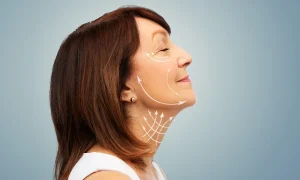Diagnosis
The severity and prognosis of VT depend not only on the clinical manifestations but also on whether or not there is underlying heart disease. The definitive diagnosis of VT is made by an ECG recorded during the tachycardia crisis. However, in cases where a recording is not achieved during the tachycardia, other examinations such as a Holter recording or an electrophysiological study will be required.
Treatment
The urgency and treatment of VT crises depend on the repercussion of the VT. The alternatives are:
- Antiarrhythmic drugs: Various Antiarrhythmic medicines are administered intravenously and can stop the tachycardia crisis.
- Electrical cardioversion: When antiarrhythmic drugs are not effective, or in situations where urgent treatment is required, electrical cardioversion should be performed immediately, accompanied by cardiac resuscitation manoeuvres.
- Prevention
Patients with ventricular tachycardia are highly likely to present new episodes, so treatment should be started as soon as possible to avoid new crises.
Various treatment options should be chosen depending on the underlying heart disease and the impact of the arrhythmia.
Antiarrhythmic drugs: Currently, no antiarrhythmic drug has been shown to completely prevent recurrences. Its use as the only treatment in VT is limited to very selected cases. However, they are usually used with other treatments, such as implantable defibrillators.
Radiofrequency ablation: The effectiveness of ablation in VTs depends on the type of VT and the patient’s disease. Thus, in some kinds of VT patients without underlying heart disease, RF ablation can be curative. However, in most cases with VT and underlying heart disease, especially if there has been a previous heart attack, radiofrequency ablation is usually less effective and, in many cases, cannot even be performed.
Implantable cardioverter-defibrillator: In patients with VT and heart disease, neither drugs nor, in most cases, radiofrequency ablation offers sufficient guarantee to prevent recurrences. In these patients, a recurrence of VT can be severe and even lead to sudden death. For this reason, an implantable defibrillator is currently indicated in most patients with VT and underlying heart disease.
extrasystoles
Extrasystoles or extrasystoles are isolated beats with a different origin than sinus rhythm, appearing before their time. Depending on the origin of the extrasystoles, they are called atrial or ventricular extrasystoles.
Symptoms
In most cases, extrasystoles do not give any symptoms, but occasionally they can cause palpitations, and it is common to notice a feeling of emptiness in the chest. In people with no heart disease, extrasystoles are not severe, although they can be annoying. Occasionally they can be precursors of other more severe arrhythmias.
Diagnosis
With the taking of the pulse or the auscultation, it can be suspected that the patient has an extrasystole. However, the definitive diagnosis is made using the ECG. Since extrasystoles are usually occasional, it can be very difficult to record them on an ECG performed in an office. For correct detection, it may be necessary to perform a 24-hour ambulatory electrocardiogram (Holter).
Treatment
In principle, extrasystoles should not be treated. Exceptionally, in patients in whom extrasystoles cause bothersome symptoms (palpitations, feeling of emptiness in the chest), some type of treatment, usually drugs, may be indicated.
- heart blocks
Under normal conditions, the heartbeat originates in the sinus node and is transmitted from the atria to the ventricles through the atrioventricular (AV) node. When there is an alteration at the NA level, the stimulus that comes from the atrium is not transmitted to the ventricles, and there is a slowing of the heart rate, known as a blockage.
Symptoms
Blockages can be of different degrees and constant or intermittent. In these situations, patients may not have any symptoms, may notice a decrease in their exercise capacity, or may experience loss of consciousness, usually in the form of syncope.
Diagnosis
The diagnosis of heart block may be suspected when a patient has symptoms, and a low heart rate is detected. However, the definitive diagnosis can only be established by ECG. In cases where the blockage is constant, the ECG recording will give us the diagnosis. In cases where the block is intermittent, diagnosis can be difficult, as at the time the ECG may be performed, there is no block, and therefore it is normal. In addition, several Holter recordings or an electrophysiological study may be necessary for these patients.
Treatment
There may be some types of blockages (those of the first degree and some of the second degree) that are benign and that if they do not cause symptoms, they should not be treated. Therefore, they must be treated in cases of more serious blockages or those that cause symptoms (usually palpitations).
- atrial flutter
This arrhythmia resembles atrial fibrillation, but in this case, the atria fire regularly but at extremely high rates. Hence, the heartbeat is usually fast (often between 100 and 150 bpm) and regular. Therefore, the considerations for atrial fibrillation in terms of symptoms, diagnosis, origin and prognosis are similar.
Treatment
The therapeutic approach for acute flutter crisis is similar to that for AF. Approximately 50 per cent of patients with flutter crises spontaneously return to sinus rhythm within a few hours, so it may be prudent to allow a waiting period before starting any treatment. When this does not occur, antiarrhythmic drugs may be given. If, despite the administration of drugs, the AF crisis does not subside, electrical cardioversion can be performed, which in these cases must be done with sedation or light anaesthesia.
Prevention
The biggest difference in treating chronic flutter is that radiofrequency ablation is a highly effective treatment for flutter and is probably the treatment of choice at present.
Diagnosis
The diagnosis is made from the interpretation of the data obtained after several tests, among which are:
- Clinical history: It is essential to have a diagnostic suspicion and guide the specialist on the tests the patient needs to perform.
- Physical examination: If the examination is performed during the arrhythmia, not only the frequency of the heart pulse must be verified, but also whether it is regular or not, as well as assessing, if possible, the blood pressure and other repercussions of the arrhythmia, such as sweating, paleness, shortness of breath, etc.
- Electrocardiogram (ECG): The definitive diagnosis of arrhythmias is made by ECG. However, this reference test has the disadvantage that it only collects the cardiac electrical activity at the moment when the arrhythmia is occurring. For this reason, when patient has symptoms suggestive of arrhythmia, they should go to a specialist as quickly as possible to have the test performed.
However, in most cases, when the electrocardiogram is recorded, the patient is not in arrhythmia. In these cases, even though the ECG will usually be in normal sinus rhythm and therefore will not allow a definitive diagnosis, it is recommended that it be performed because it allows data to be obtained that guide the possible diagnosis.
- Electrophysiological study: It is a technique that allows reproducing, in many cases, the arrhythmias that the patient presents, as well as determining the characteristics of the conduction of the heart. The femoral vein must be punctured at the groin level (with local anaesthesia) to perform it. Through it, the inferior vena cava and filaments (electrocatheters) are introduced that reach the heart and allow the parameters of interest to be measured. As well as stimulating the heart to assess the possible provocation of tachycardia.
- 24-hour ambulatory ECG recording (Holter). This name is the technique by which the patient is placed with ECG electrodes connected to a recorder that records for 24 hours while the patient performs his usual activity.
If any arrhythmia appears during the time that the patient has the record placed, it will be recorded and can be seen. The advantages of this technique are that the ECG recording time is extended, and the probability of recording the arrhythmia increases. However, in most cases, 24 hours is a relatively limited time, and none is usually recorded except in persistent arrhythmias.
- Event recording: Sometimes, other tests can be performed for the Holter to record the cardiac electrical activity for longer.
In addition, other systems similar to the Holter can be used but are smaller in size and can be worn for a long time. These systems, although they record the ECG continuously. When the patient presents an episode suggestive of arrhythmia, he activates an external command so that the ECG is stored prior to activating the system. There are currently two basic types of registry of this type, some external, which can take several weeks and have a memory per episode of about 5 minutes and others that are implantable, which require minimal intervention for their implementation. Still, they can be worn for up to 14 months and have a memory of up to 40 minutes per episode.
- Exercise test: When the doctor suspects an arrhythmia related to physical effort, he can perform this test.
Treatments
The main treatments are:
- radiofrequency ablation
This technique is used to treat different types of tachycardias. For example, the doctor will puncture the femoral vein in the inguinal area (with local anaesthesia), introducing several catheters with which he reaches the heart.
Once there, and utilising electrical stimuli, it will try to locate the origin of the tachycardia. Then, through one of the catheters, it will apply energy that produces heat and alters the focus of the tachycardia, eliminating it.
In cases of arrhythmia without underlying cardiac pathology, ablation can be considered curative since the patient is free of arrhythmia without needing other treatment. This is a highly effective option with a low rate of complications in most arrhythmias.
- Cardioversion/electrical defibrillation
This is a treatment through which an electrical discharge is carried out that depolarises the entire heart causing the immediate suspension of any arrhythmia, after which normal rhythm (sinus) is recovered.
It is indicated for treating atrial fibrillation, flutter, and ventricular arrhythmias, such as ventricular tachycardia or ventricular fibrillation. In cases of severe ventricular arrhythmias, defibrillation is an emergency treatment that cardiac resuscitation manoeuvres must accompany.
- Implantable cardioverter defibrillator
Implantable cardioverter-defibrillators are devices similar to pacemakers, but they can detect tachycardia or ventricular fibrillation episodes. They can stop them immediately if they occur by performing defibrillation or utilising a series of stimuli in the heart.
These systems are very effective and can significantly reduce mortality.
Antiarrhythmic drugs
They are medicines whose purpose is to prevent crises from occurring. There are several types, and each of them can be more or less useful for different arrhythmias.
They can be used as acute treatment during an episode of tachycardia or as a chronic treatment to prevent the recurrence of attacks.
Several considerations must be made: Until now, no antiarrhythmic drug is entirely effective, and none is curative. In the best of cases, when it is useful, it must be taken continuously to maintain its effectiveness. Furthermore, in those patients in whom the arrhythmia is due to an underlying cardiac pathology, these drugs do not improve it. Therefore, most antiarrhythmic drugs can have side effects at the cardiac and extracardiac levels.
Pacemaker
It consists of a device that emits pulses of current regularly, and that is connected to the heart through a catheter. The heart activates and contracts every time one of these impulses is emitted.
Currently, pacemakers are very small and placed under the skin, usually below the collarbone, and connected to the heart through an electrode.
Pacemaker implantation is relatively simple and is performed under local anaesthesia. There are multiple pacemakers, and the indication for each will depend on the type of arrhythmia and the patient’s situation. However, it should be noted that current pacemakers have an average life between 7 and 10 years, after which they must be replaced.
In addition, the most modern do not require electrodes that reach the cardiac cavities.
Other data
The prognosis of this pathology depends on the type of arrhythmia and the patient’s initial state.
Generally, bradyarrhythmias or slow arrhythmias have a good prognosis if they are well treated. Tachyarrhythmias and supraventricular ones have a better prognosis than ventricular ones.






More Stories
Enhance Your Culinary Experience: Pairing Cannabis Strains with Local Flavors
How to Choose the Right Cheek Filler and Factors to Consider?
How can you use 11oysters candy to create a romantic moment?